For humans, anything that is ‘huge’ is instinctively considered to be dangerous or scary. When the ‘huge’ refers to an animal it becomes scarier. One such huge animal is our topic of interest in this article.
The huge animal we are talking about is a famous dog breed named, the Saint Bernard or St. Bernard. Big in every way possible, the Saint Bernard is actually like a giant and alive teddy bear.
This breed is mistaken for its size to be scary and “too big to be true”. The St. Bernard grows very huge in size but is an absolute sweetheart. Thinking of bringing this calm beast into your home and life?
Read along and get to know this big dog better and whether you can provide them the right environment.
St. Bernard Dogs have starred in a Hollywood movie Series called “Bethoven”
Table of Contents
Saint Bernard Facts

Weight: Male: (140-180 pounds), Female: (120-140 pounds)
Height: Male: (27-35 inches), Female: (25–31 inches)
Life Expectancy: 8-10 years
Dog Group: Mastiff, Working
Saint Bernard Pictures
At A Glance
About Saint Bernards
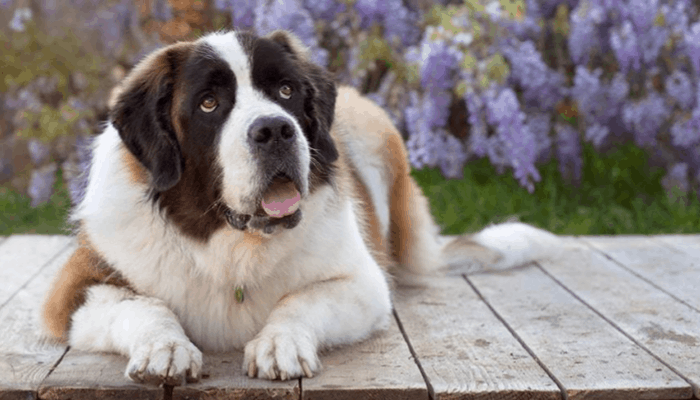
A very large working breed, the Saint Bernard looks like a giant teddy bear. This four-legged living teddy is highly mistaken to be dangerous but is very calm indeed.
This breed is widely popular due to its enormous size. The Saint Bernards can grow really tall, up to 4 or 5 feet and weigh around 64 to 70 kg. They are huge and heavy but cute like a teddy.
They have a thick furry coat which can be either be soft or rough. The soft coat can be coarse and flat while the rough coat is flat and dense. They have a long, heavy and bushy tail.
Not suitable for the apartment living lifestyle the St. Bernard requires a lot of space (as they occupy a big amount of space in the house and your heart). They need a big backyard or front garden or a house with typically less furniture and more free space.
With their humans, they are just the best. They love being around humans and are especially great with small babies and children. They are happy and cheerful living beings and also great protectors of their loved ones.
They are also good with other pets, if you have any. They love having someone around to play with or just lie around. Training these dogs can be quite a task because they can be lazy and adamant when training.
History

Developed in the western Alps of Italy, the Saint Bernard is a large working dog breed. Dating back thousands of years ago in the history this is one of the largest breeds that ever existed. (Still do)
This dog is a giant, muscular and heavy dog breed. Strong and huge the Saint Bernard is still very gentle and kind. Due to their history, they have a naturally protective instinct in them.
These dogs were initially bred for rescuing purposes, rescuing people stuck in the Italian and Swiss Alps. People at the Great Saint Bernard hospice or hostel located there developed this breed as “rescue dogs”.
As a rescue dog the Saint Bernard also has an interesting story of a dog named “Barry”. All the Swiss people think of Barry when a St. Bernard is mentioned. Barry saved the lives of around 40 people as a mountain rescue dog.
Barry the Saint Bernard, always had a small barrel hanging around his neck. That barrel was thought about to be a barrel of brandy so, Saint Bernards are widely depicted with a barrel around their neck, hinting the barrel of brandy.
This dog breed also gets its name from its famous spot and birth place, the Great St. Bernard Hospice, located in the western Alps of Switzerland and Italy. They are also called as Alpine Mountain Dogs or Cattle Dogs used by the farmers and the French Alps.
Facts Theater
Parenting Guide & Care
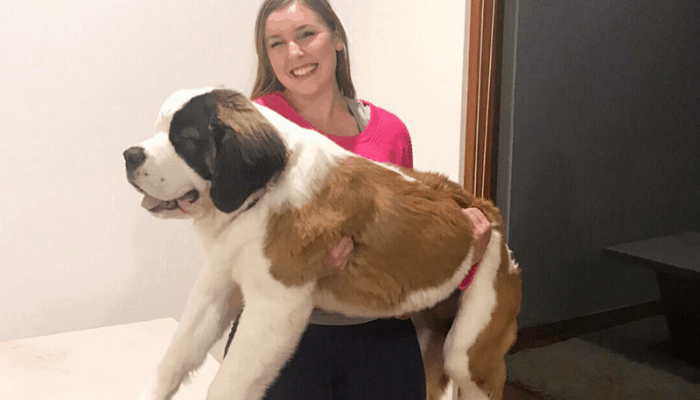
Taking care of a Saint Bernard can be little difficult and may need more attention. If you are considering bringing this giant breed home here is some parenting and care tips for this dog.
- Provide them with proper and balanced exercise routines. When they are young these dogs require enough exercise that keeps them lean and healthy. With proper exercising make sure they are not over-exercised.
Young St. Bernards have soft-growing bones and joints which can be damaged if over-exercised or over-stressed. - These dogs can need attention and training otherwise they will just hop around un-coordinately in the house. Enroll them in some obedience training classes to give them well and proper training.
- Socialize them a lot. Saint Bernard needs a lot of exposure to the outside world, people, sights, and sounds. Without socialization, they can become shy, aggressive, or suspicious of strangers. These characteristics are not good for a dog to live with every day.
- Saint Bernards shed a lot as they have thick and hairy fur. You might experience a lot of dog hair in the house on the floors, the furniture, on your clothes and so on. Before getting this dog be prepared for a LOT of dog hair in the house.
- These dogs also drool a LOT so you will need to keep a towel handy once they have finished eating or drinking water. Their saliva is too much to handle and Saint Bernard’s parents should be prepared to deal with the drool.
- These dogs look like teddy bears but can be very strong-headed. They are not pushovers when it comes to training and the cuteness is only on the outside. Treat them and train them with a consistent calm attitude to avoid aggression building in them.
Personality & Temperament

A Saint Bernard that is well-bred or purebred is usually very calm and relaxed. These are sensible dogs as well. An adult Saint is very calm and relaxed while a Saint Bernard puppy can be very bouncy and silly.
They need obedience training from the start and as early as possible or they can grow all bouncy, even as they fully develop. This breed can easily forget its size and behave like a small puppy hopping and bouncing indoors.
These dogs need a spacious place and plenty of space to roam around. They love being in the garden or in the yard. They need enough exercise and physical activity to stay sane and refrain from being destructive.
They love attention and love being around humans. The Saint Bernard can actually be like a living teddy bear for small children. This breed is very loving and placid with its humans and they make really good friends for small children.
A Saint Bernard is so good with the kids that many times this dog will need protection from the children. These dogs are excessively tolerant, patient, and gentle with kids and willingly put up with anything with small kids around.
They are strong, muscular, smart, intelligent absolute goofballs, and very loyal beings. Their temperament is calm, sensible, and relaxed. They can be aggressive when left alone for long but otherwise, they are just the best.
Grooming & Colors
Saint Bernard has both long and short-haired coats. However, it varies from dog-to-dog but some have long hair while others have short hair. In both cases regular grooming is a must.
These dogs require a proper bathing and brushing routine. Depending on this dog’s activity level they might need a bath once in a week. The gap between their baths should not exceed 8 weeks.
If your Saint likes playing in the mud and often gets dirty before giving them a bath take a high-velocity dryer and loosen the dirt from their skin. This assures a smooth and thoroughly clean bath.
To brush their coat use a wide-toothed comb and make sure the hair is not tangled. A wide-toothed brush will just glide easily through their hair and deep down till the skin. Pay more attention at the neck and chest for excessive hair coat.
You can also use a grooming rake. A grooming rake is useful to remove loose or dead hair from their undercoat. Use the rake at a 45 degree angle to move it in short and firm strokes along their back, sides and legs.
- Other grooming care for the St. Bernard includes cleaning the area under their eyes with a wet cloth sprinkled with hydrogen peroxide to avoid tear stains.
- Brush their teeth regularly to avoid tartar build-up or bad breaths. Use canine toothpaste to brush their teeth regularly.
- Thoroughly clean their ears gently with a cotton ball or a cleanser.
- Whenever their nails start making the “click” sound when they walk or run trim their nails as soon as possible. Use nail clippers for the same.
Feeding
A Saint Bernard’s diet and feeding portions totally depend on its growth rate. The rate at which they grow can determine how many meals or what portion size best suits this giant of a dog.
Some Saint Bernards can ask for a lot for food and in such cases smaller portions are advised. This breed is a particularly a gluttonous eater and this justifies their “begging for food all the time” nature.
Their diet should be nutritional and balanced on the protein content. Do not feed them general or local puppy food. Feed them dog food that has around 25% protein content and not more than that.
Mix a little canned food with their regular food, around 2 tablespoons for better taste and just as a food mixer. Or add warm water to their food so that the food is more palatable and it doesn’t stay very dry.
- At 4 to 6 months of age your puppy will need 3 meals a day and 1 to 2 cups per feeding.
- An adult Saint Bernard around 18 months of age will need 2 meals a day and 4-8 cups of food per meal.
- As they grow old which is when they reach 7 years of age they will need the food demand can increase for 3 meals a day or remain the same as their ongoing dietary needs.
Suggested: Senior Dog Food
Health & Vaccination

Saint Bernards can experience a lot of health problems in their small lifespan of maximum 10 years.
- Heart Diseases – Heart diseases that your St. can develop are the cardiomyopathy, sub aortic stenosis and the tricuspid valve diseases. These diseases are the major health conditions in this breed likely to occur in them.
- Orthopedic Diseases – These are heavy dogs and are prone to bones and joints related health conditions. Orthopedic diseases such as hip dysplasia, panosteitis, cruciate ligament rupture and the wobbler’s syndrome are very likely and serious health conditions in Saint Bernards.
- They are also very prone to developing Epilepsy. Seizures resulting into Epilepsy are a big concern for this breed.
- Eye diseases like the Cherry eye are also very common in these dogs. Other eye abnormalities include cataract, entropion and ectropion and some eyelid or eyelash abnormalities.
- St. Bernards are also at a high risk of developing gastrointestinal problems. Bloat being the most common gastrointestinal syndrome in this breed. They are 10th most likely of all large breeds to develop a health condition like Bloat.
- Other health issues include skin problems like pyoderma or elbow hygroma, Hypothyroidism, blood-clotting etc.
Vaccination Chart
- At 6-8 weeks – Core Vaccines DAP (Distemper, Adenovirus, and Parvovirus)
- 10-12 weeks – DAP and Non-core vaccines Leptospirosis and Canine Influenza.
- 14-16 weeks – DAP, Rabies and Non-Core vaccines
- Annual and 3 Years – Rabies and all Non-core vaccines.
Suggested: Guide To Dog Vaccination
Frequently Asked Questions
Similar Breeds
Hello Readers,
That’s all about this cute giant, the Saint Bernard. Hope you liked this article and it helped you know this breed a little better.
Feel free to ask us your doubts and also let us know your reviews on this article.
Share this with your friends on WhatsApp or Facebook and help your friends as well.
Subscribe to our YouTube channel and Instagram from following links for more fun stuff



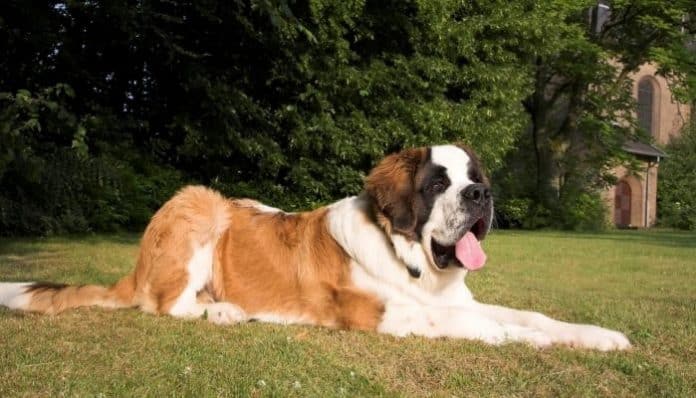

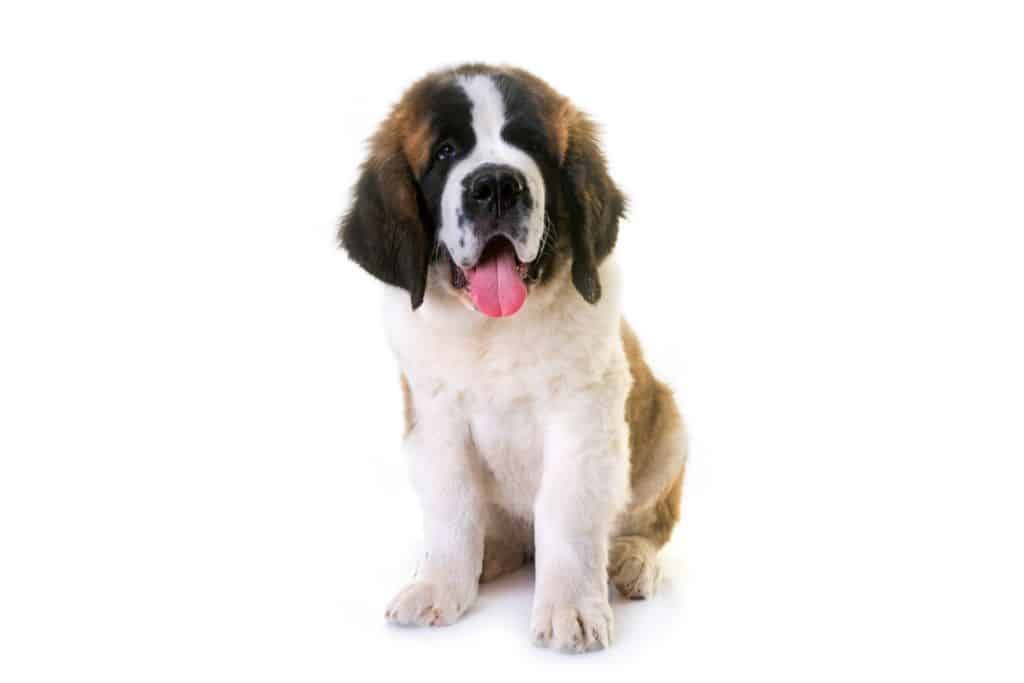









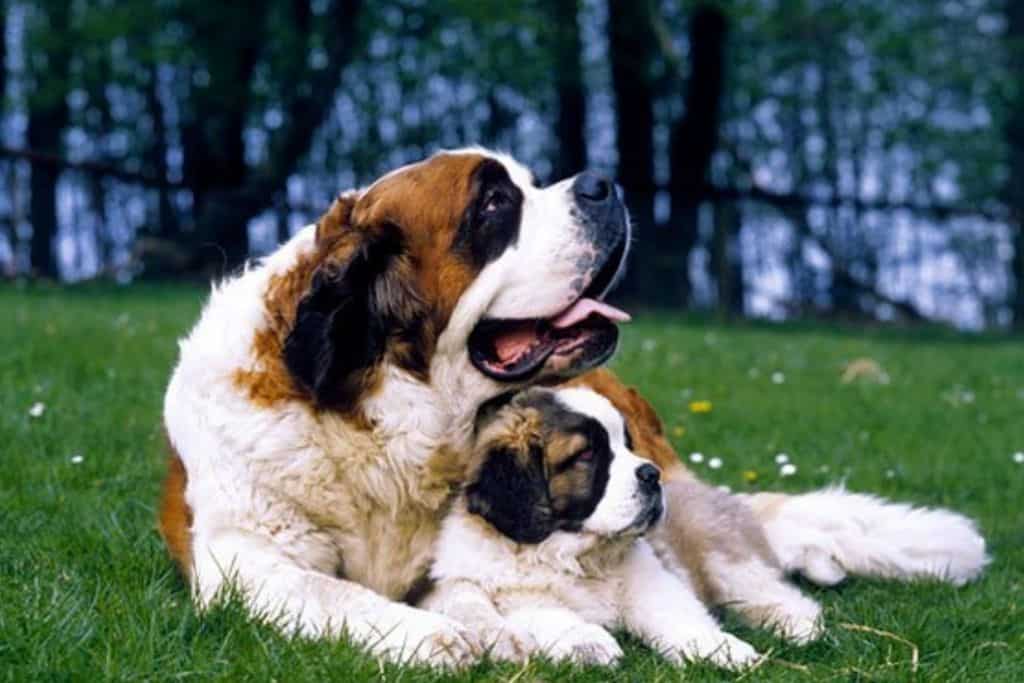




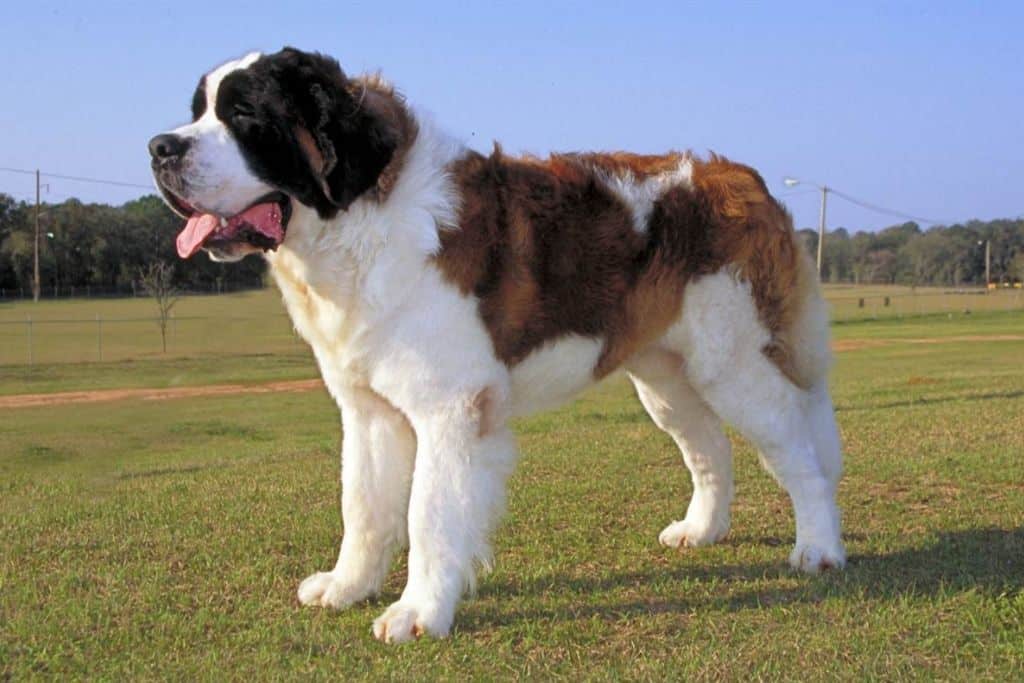
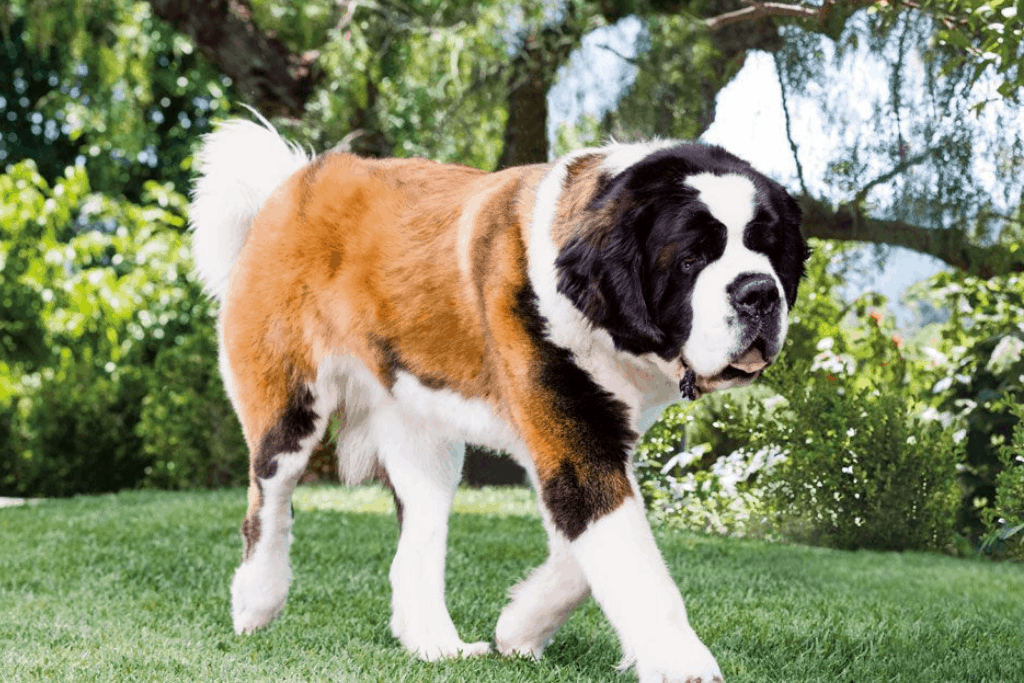
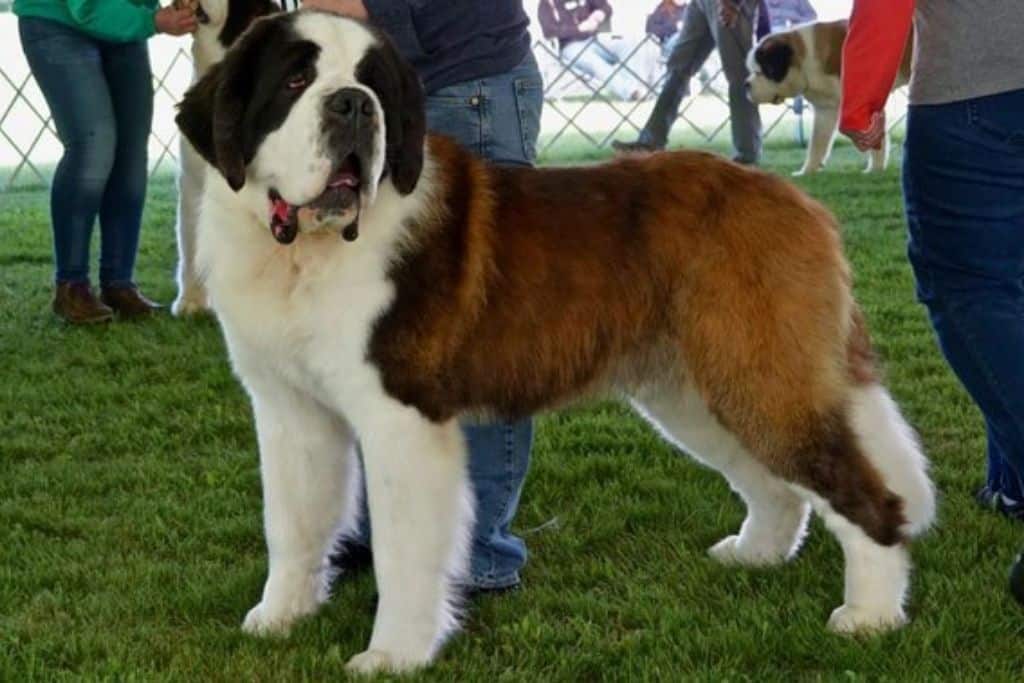

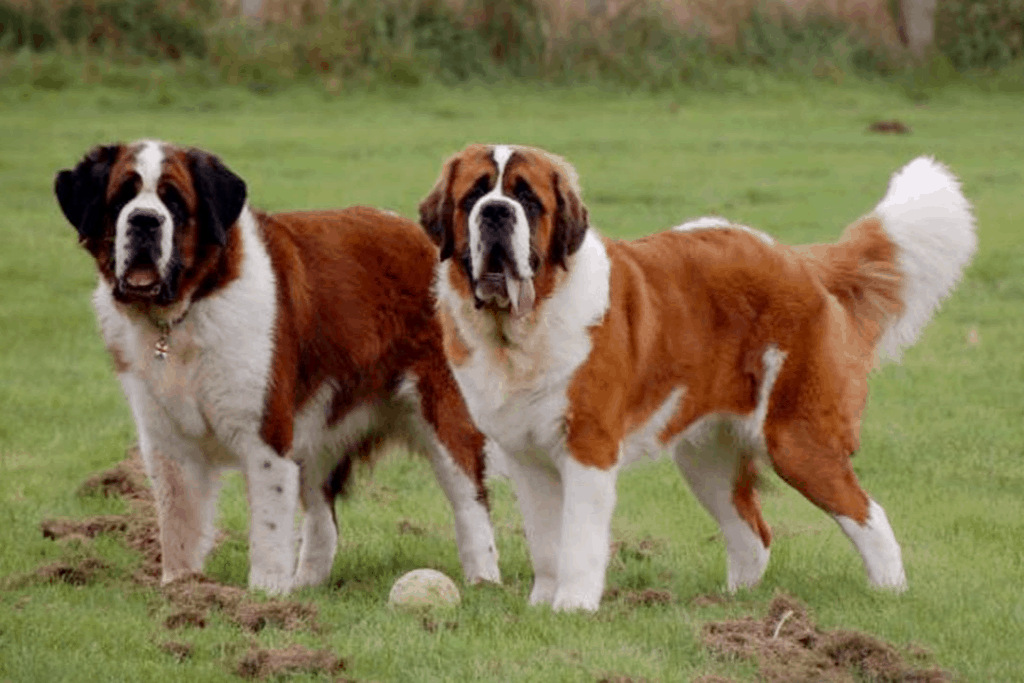








[…] breed highly resembles the St. Bernard Shaw and the […]
[…] is hands down the all-time favorite music genre of dogs. Remember the movie, Beethoven? The Saint Bernard in the movie howls along to the music that plays on the television. […]
My 2 and a half year old male has been socialized, obedience school and public parks since he was 8 weeks old, also raised with 4 cats. He does not tolerate the cats at all and is not tolerant of other dogs, except family dogs, perfect with kids. Does not tolerate people coming over unless on his leash and not close. His 9 month old sister is perfectly behaved. I keep trying though
Hi Linda!
I understand what you are saying.
If you think this is a high time you may consult a professional trainer and understand what exactly is going on with your male Saint Bernard.
Thanks!
[…] and are filled with high proteins, fats, and most importantly calories. Giant breed puppies like Saint Bernard require more calories and […]
[…] and hops toxicity. Any breed can be affected by it but Greyhounds, Labrador Retrievers, Saint Bernard, Border Collie, and Dobermans are more susceptible to it.Symptoms to look out for – Vomiting with […]
[…] compared, this mastiff is slightly heavier than his canine equivalent to Saint Bernard. When it comes to body mass and sturdiness the English mastiff also leaves behind the Great Dane […]